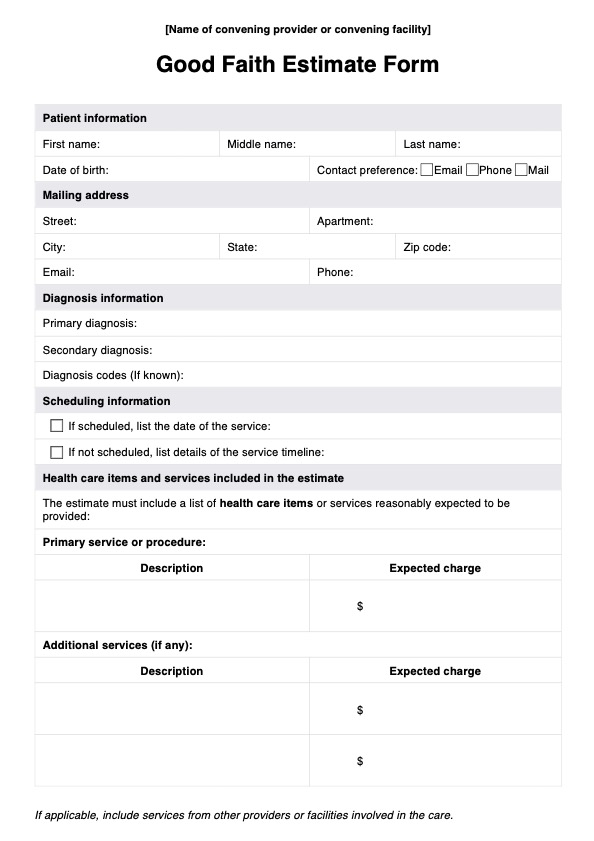The form is required for uninsured or self-pay clients under the No Surprises Act when non-emergency medical services are provided. It helps clients understand their out-of-pocket costs.

Good Faith Estimate Template
Understand how a Good Faith Estimate Template works and how it can help patients estimate their medical costs.
Use Template
Good Faith Estimate Template Template
Commonly asked questions
The estimate is an approximation. If the final cost exceeds the estimate, inform the client immediately and encourage them to review the charges. They can dispute the cost under the No Surprises Act.
Yes, the form can be used for insured clients to show out-of-pocket costs not covered by their insurance.
EHR and practice management software
Get started for free
*No credit card required
Free
$0/usd
Unlimited clients
Telehealth
1GB of storage
Client portal text
Automated billing and online payments











